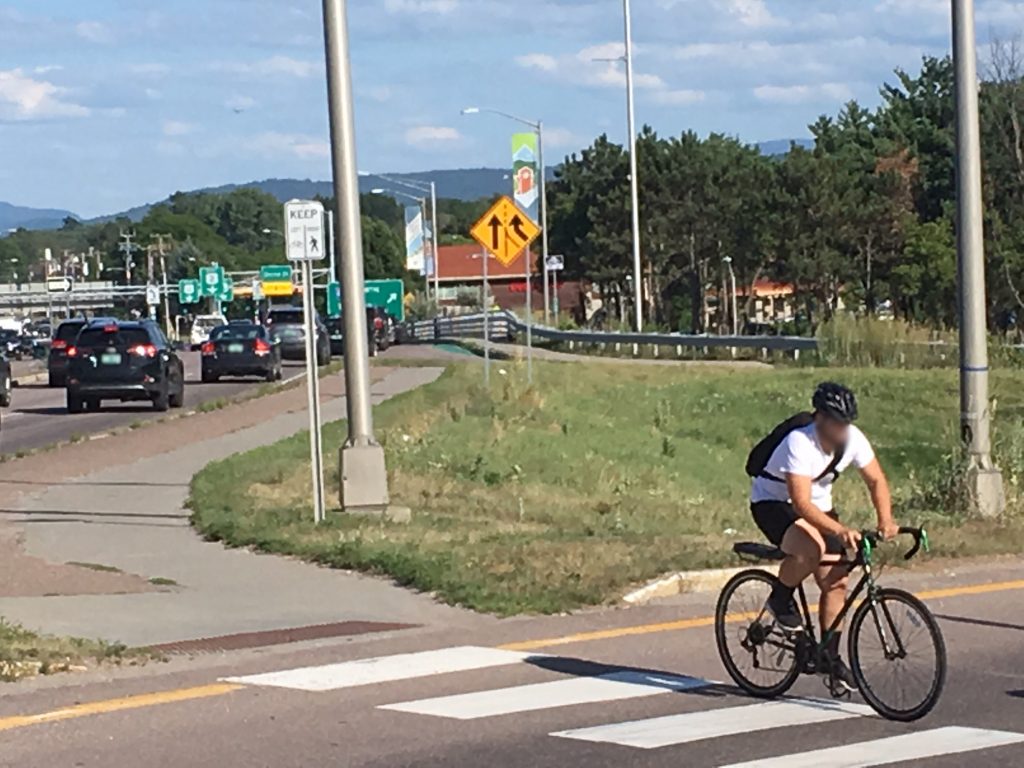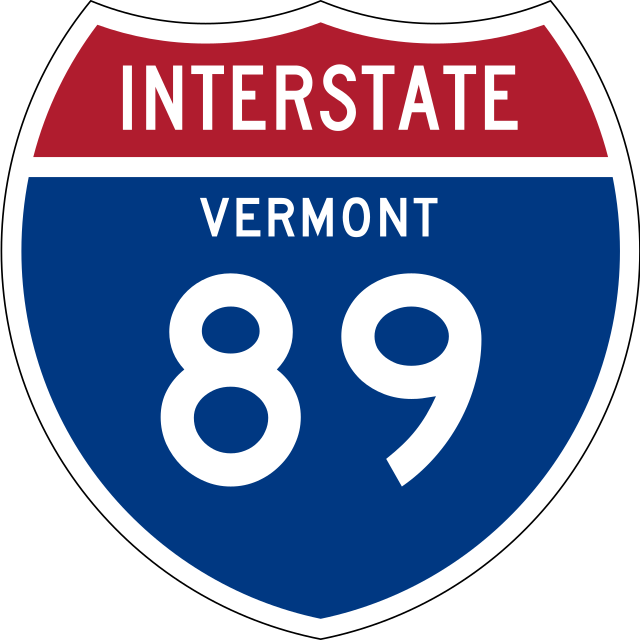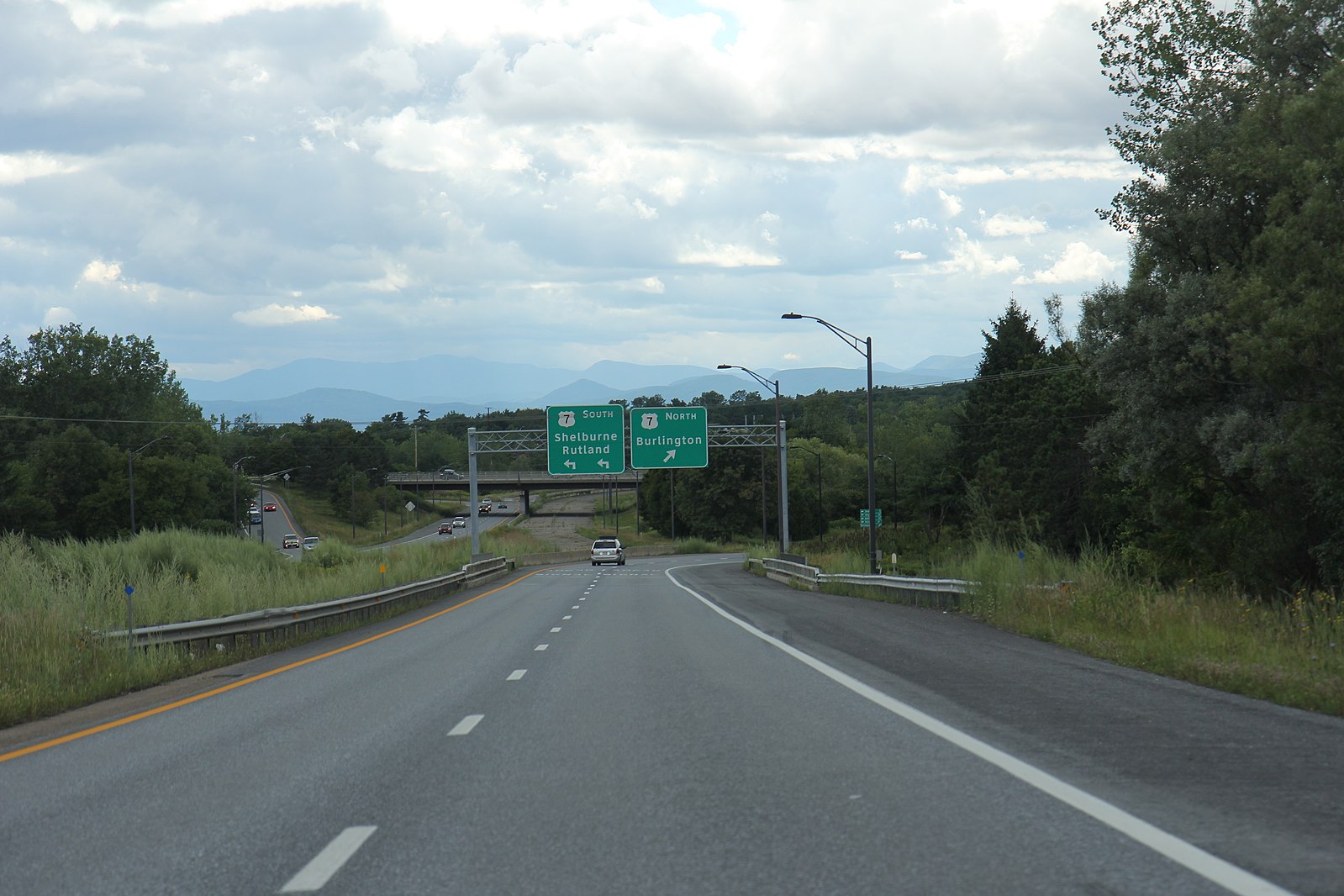By AARP Vermont, the Conservation Law Foundation, Local Motion, and the Vermont Natural Resources Council
Crossing the street shouldn’t mean risking your life. But for anyone biking, walking, or rolling in Burlington or South Burlington, the intersection at Exit 14 and Williston Road is treacherous, having seen nine crashes in just ten years. It has been identified as the second most dangerous stretch of road for bicyclists in the state.
Fortunately, a conversation about potential improvements to the interstate and interchanges in Chittenden County is currently underway in the I-89 Corridor Study through the Chittenden County Regional Planning Commission.

As representatives of organizations that care deeply about a transportation system that supports people’s independence, enhances the livability of our communities and protects our environment, and as members of the I-89 Corridor Study Advisory Committee, we think this once in a generation planning study can—and should—do a number of things.
This study should result in improvements for people who are traveling not only by car, but by foot, bike or public transit. It should make an important bike/pedestrian connection between Burlington and surrounding towns safe enough for anyone to cross in comfort, and better link these two communities. It should provide a better transit experience; enhance livability and minimize sprawl; and help us reduce greenhouse gas emissions.
This will require that decisions are made with diverse input from all of the communities that will be impacted, to ensure these plans include all users. All are welcome to weigh in at a public meeting on April 29, at 7pm, via Zoom. Find more details at https://envision89.com, including a map of the study area.
Two of the options being considered support our vision of connectivity for all modes by making improvements to existing interchanges. One is Exit 14 (the BTV/UVM exit), which has long been a barrier to moving safely between Burlington and surrounding communities by foot or bike, or even by car. The other is Exit 13 (189), an incomplete auto connector route (and another barrier to walking and biking).

Some of the improvements under consideration for these exits, such as sidewalk overpasses, multi-use paths, and others would make it safer and easier to get around the area without a car. These are the kinds of changes we think can bring our transportation system into alignment with what we need for a healthy, vibrant, sustainable, and equitable future.
Another option under consideration is the so-called Exit 12B, an entirely new interchange at Tilley Drive (Rt. 116) in South Burlington. Unfortunately, this would come at great cost both in terms of investment and impacts on nearby communities. This type of outdated development leads to sprawl, undermines our State Plan on Aging’s goals related to reducing the impacts of isolation and loneliness, and undermines our energy and climate goals – along with many other goals and values we have as a state. We need to fix the problems we already have at Exits 13 and 14 before we consider costly, disruptive, and controversial new projects.
The changes recommended in the I-89 Corridor Study will ultimately become part of a long-range plan and guide how future public dollars are spent. The options advanced will define not only how the interstate functions for people who drive, but also for those who can’t drive, or choose not to, which amounts to about one third of Vermont’s population.
We encourage you to attend the April 29 public meeting to learn more and express your viewpoints on the future of moving around Chittenden County. Register and learn more here. The study should envision, define, and advance a system that will work in light of emerging trends, not keep us mired in the past.
Top image: This part of I-89 falls within the 1-89 Corridor Study. Photo from Wikimedia Commons by Royalbroil.
In addition to this blog, this commentary appeared in papers throughout Vermont.




